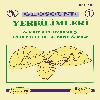Baltalı (Uşak) civa madenleri ve çevresinin hidrojeokimyasal değerlendirmesi
Hydrogeochemical assesments of Baltalı (Uşak) mercury mines and surrounding areas
___
- Banks, D, Younger PL, Arnesen RT, iversen E R, Banks SB, 1997. M ine-water chemistry: the good, the bad and the ugly, Environmental Geology, 3213:157-174.
- Başkan, , M.E. ve Canik, B., 1983. AIH Türkiye sıcak ve mineralli sular haritası, MTA No:189, 80p., Ankara.
- Bingöl, E., 1974. Muratdağı merkezi kesiminin jeolojisi, magmatik metamorfik kayaçların petrolojisi ve jeokronolojisi, Doçentlik Tezi.
- Calmbach, L., 1997. Aquachem Computer Code-Version 3.7.42, Waterloo hydrogeologic, Waterloo, Ontario,Canada, N2L 3L3.
- Gal N.E., 2000. The impact of acid-mine drainage on groundwater quality, Davis Pyrite Mine, Massachusetts, Ph.D Thesis, University of Massachusetts, USA, 131.
- Gemici, Ü., Oyman T., 2003. The Influence of the Abandoned Kalecik Hg Mine on Waters and Stream Sediments, (Karaburun, Izmir, Turkey), The Science of the Total Environment, 312:155-166.
- Gemici Ü. 2004. Impact of Acid Mine Drainage from the Abandoned Halıköy Mercury Mine (western Turkey) on Surface and Groundwaters", Bulletin of Environmental Contamination and Toxicology, 72/3, 482-489.
- Gemici U, Tarcan G. 2007. Assessment of the Pollutants in Farming Soils and Waters Around Untreated Abandoned Türkönü Mercury Mine (Turkey). Bulletin of Environmental Contamination and Toxicology 79: 20-24.
- Gray, J.E., 2000. Theodorakos P.M., Bailey E.Â., Turner R.A., Distribution, speciation and transport of mercury in stream-sediment, stream-water and fish collected near abandoned mercury mines in southwestern Alaska, USA, The Science of the Total Environment, 260:21-33.
- IAH (International Association of Hydrogeologists), 1979. Map of mineral and thermal water of Europe.
- Scale 1:500,000. International Association of Hydrogeologists, United Kingdom.
- Mariko, T., 1970. Muratdağı bölgesindeki Banaz-Uşak civ a cevheri yatakları ve jeolojisi, MTA Rapor no 4572, Ankara.
- Milu, V., Leroy J.L., Peiffert C., 2002. Water contamination downstream from a copper mine in the Apuseni Mountains, Romania. Environmental Geology, 42: 773-782.
- Parkhurst, D.L., Appelo, C.A.J.,. User's Guide to PHREEQC (Version 2) - A Computer Program for Speciation, Batch-Reaction, One-Dimensional Transport and Inverse Geochemical Calculations.
- TSE 266,1997. Sular-İçme ve kullanma suları, Türk Standartları Enstitüsü, Ankara.
- Yıldız, M., 1978. Türkiye'de bazı civa yataklarının oluşum ve mukayesesi. Maden Tetkik ve Arama Enstitüsü Yayınlarından, No. 173, Ankara.
- Yıldız, M., Bailey E.H., 1978. Mercury deposits in Turkey. United States Geological Survey Bulletin, 1456.
- ISSN: 1019-1003
- Yayın Aralığı: Yılda 2 Sayı
- Başlangıç: 1986
- Yayıncı: Çukurova Üniversitesi Jeoloji Mühendisliği Bölümü
Kireç söndürme suyu özelliklerinin söndürülmüş kireç kalitesine etkisi
Sarıkaya (Yozgat) demir cevherleşmelerinin oluşumu ile ilgili maden mikroskobisi özellikleri
Zonguldak-Sapça taş ocağı agregalarının kullanılabilirliği
İsa YÜKSEL, Hülya Keskin ÇITIROĞLU, Sibel Karacan DOĞAN
Hovdu-Hokkadağ-Uğurlubağ (Feke- KD Adana) alanının stratigrafisi
Cumaovası (İzmir) yeraltı sularının kirlenebilirliğinin AHS-DRASTIC yöntemi ile değerlendirilmesi
Celalettin ŞİMŞEK, Burhan ERDOĞAN, Nesrin BARIŞ
Ağsaklar civarı (Göynük/Bolu) bitümlü kayaçlarında organik karbon ve iz element zenginleşmeleri
Yahşihan (Kırıkkale) ve civarının tekno-stratigrafisi
Ahmet Can AKINCI, Ulvi Can ÜNLÜGENÇ
Elazığ çevresindeki kayaçların beton agregası olarak kullanılabilirliği
Baltalı (Uşak) civa madenleri ve çevresinin hidrojeokimyasal değerlendirmesi
Toygar AKAR, Gültekin TARCAN, Sevda AYATA, Ünsal GEMİCİ, A. Melis SOMAY
